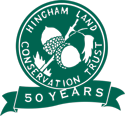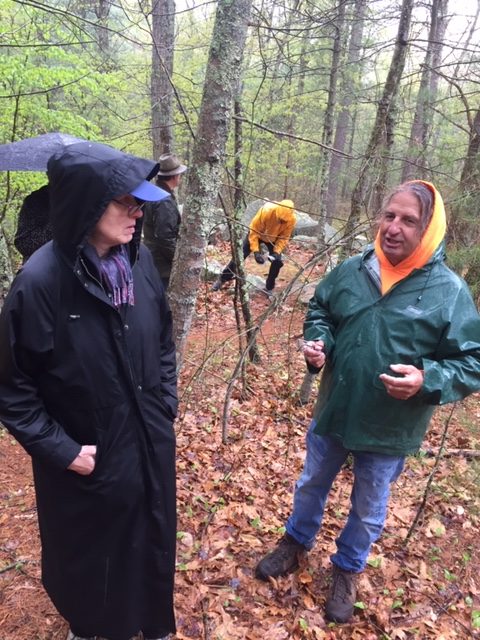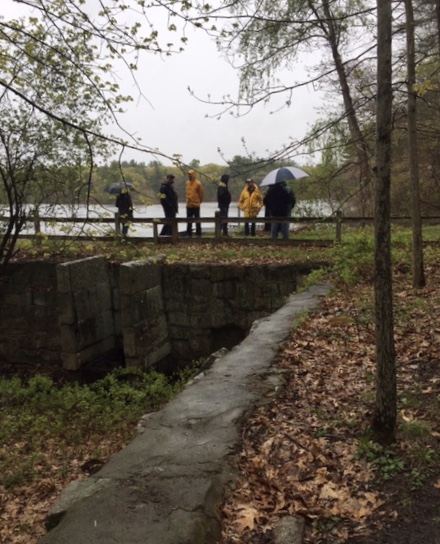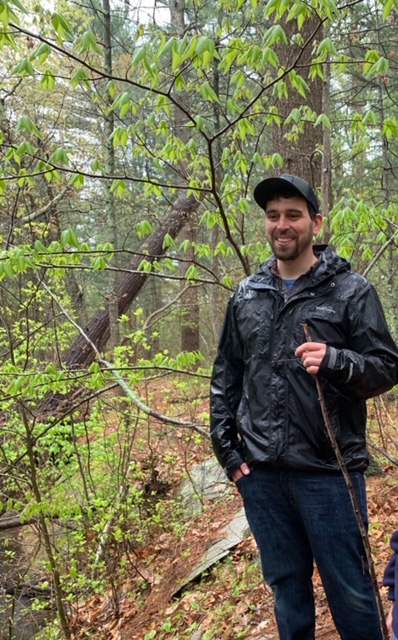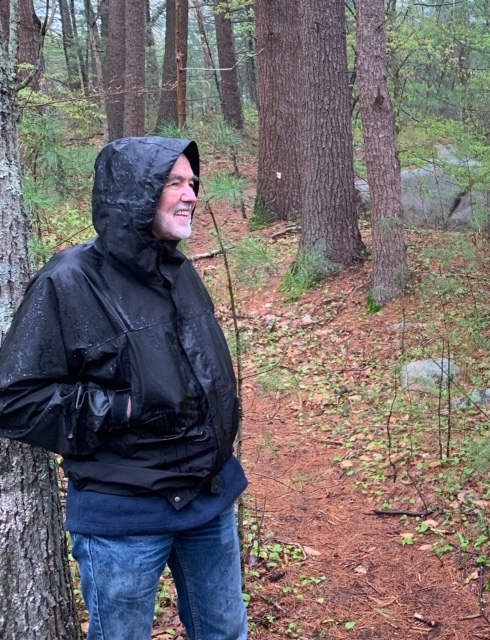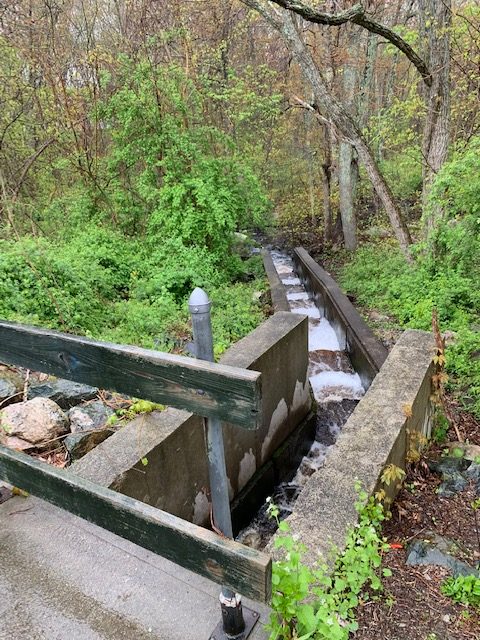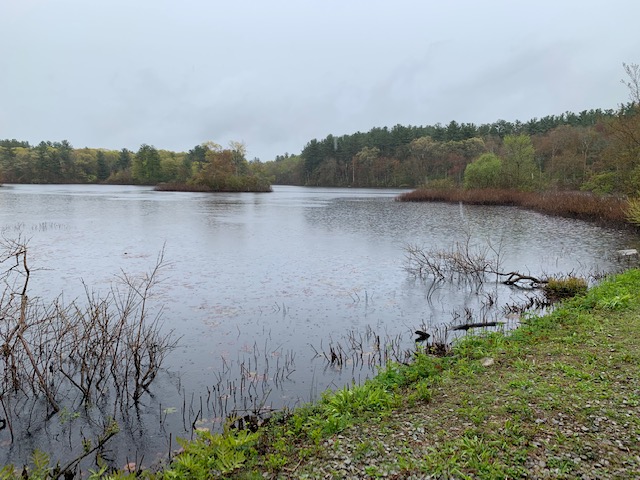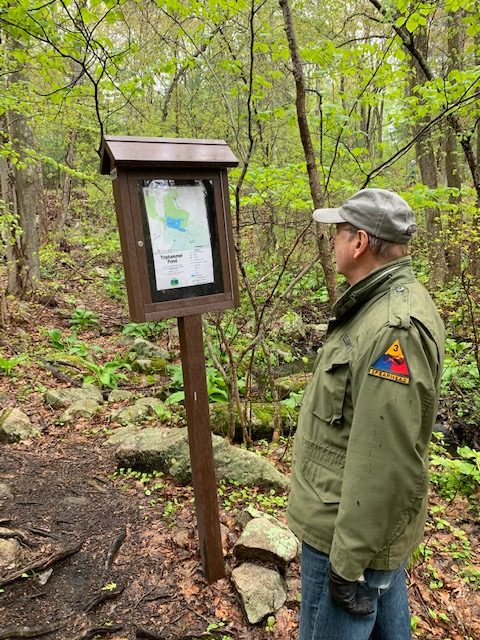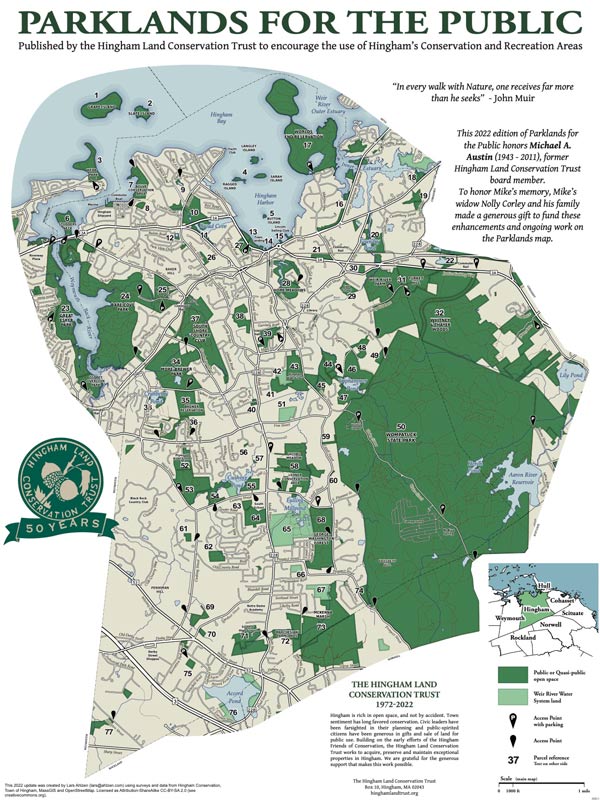 On Sunday May 12th, Mother’s Day, the Hingham Land Conservation Trust 2019 sponsored a guided walk at the Triphammer Pond Conservation Area. The day was rainy, but a hardy group of walkers met in the parking lot at Wompatuck Park. Our guide for the walk was Steve Gammon of Friends of Wompatuck, with some additional history commentary provided by local author/history buff Stephen Dempsey. Steve Gammon spent his career at Wompatuck until his retirement from the position of Park Supervisor in 2015. Steve has tremendous knowledge of the state park and surrounding town conservation area (including Triphammer Pond). Stephen Dempsey is a life-long Hingham resident and author of two books “Hingham Through Time” (co- written with Alexander Macmillan) and “A Guide to Seventeenth- and Eighteenth-Century Hingham Volume I”.
On Sunday May 12th, Mother’s Day, the Hingham Land Conservation Trust 2019 sponsored a guided walk at the Triphammer Pond Conservation Area. The day was rainy, but a hardy group of walkers met in the parking lot at Wompatuck Park. Our guide for the walk was Steve Gammon of Friends of Wompatuck, with some additional history commentary provided by local author/history buff Stephen Dempsey. Steve Gammon spent his career at Wompatuck until his retirement from the position of Park Supervisor in 2015. Steve has tremendous knowledge of the state park and surrounding town conservation area (including Triphammer Pond). Stephen Dempsey is a life-long Hingham resident and author of two books “Hingham Through Time” (co- written with Alexander Macmillan) and “A Guide to Seventeenth- and Eighteenth-Century Hingham Volume I”.
The walk first took us past historic artifacts in Wompatuck and along Accord Brook which feeds into the 19-acre Triphammer Pond. We then continued into Hingham’s 98-acre conservation property abutting Wompatuck Park and walked around the pond. As with most of Hingham’s ponds, Triphammer Pond was created by a mill dam built at the pond’s north end around 1700. Water flowing over the dam powered multiple mills that operated at the site into the 19th century. The original sawmill, erected in the late 17th century, and owned by Matthew Cushing and family successors, burned in 1823. The mill made boards, clapboards and shingles for local customers using now-rare White Atlantic cedar. A new mill (probably started by Benjamin Thomas, Sr.) installed a “trip-hammer”— a water-powered device, and began producing products —such as windlasses used to raise and lower anchors and sails, and wooden blocks for block-and-tackle mechanisms to lift heavy loads—for Hingham’s ship-builders, who supported the local fishing and lumber industries. Remnants of the former mill buildings were visible at the dam. (One of the mill buildings was repurposed as a farm building on a nearby property.) We learned that an icehouse also was near the Triphammer mill site in the early 20th century. The walk then continued past another mill pond where in the a 19th century a grist mill run by John Leavitt, and a box making mill run by the Cushing family, were located. The mill there later manufactured ships pumps and other marine merchandise.
As we left the ponds and continued back through Wompatuck, we came to the site of a granite quarry run by Israel Whitcomb in the late 19th century. Cut marks on exposed granite give testimony to the sites prior use. The 14-acre quarry site — which passed through several owners before being acquired as part of the site for the WWII US Navy Munition annex —today is part of Wompatuck Park. Steve Gammon pointed out a tidal pool, which he said was certified as a result of a local Girl Scout troop study years ago. As the walk ended, all agreed that the 90 minutes were well spent in this beautiful and historic conservation and park area.
